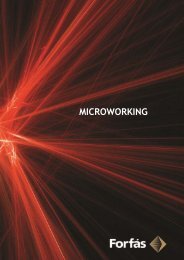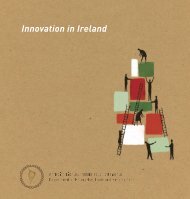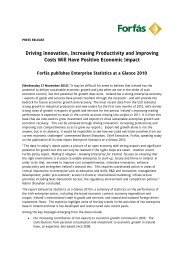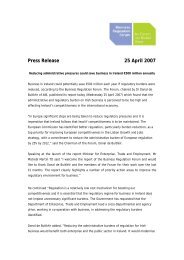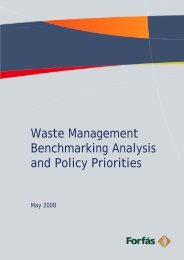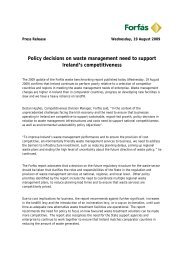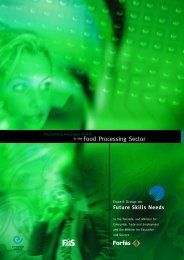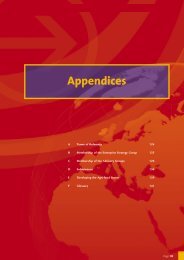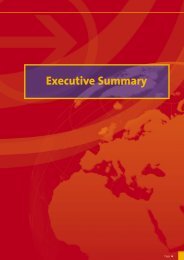Sustainability of Research Centres - Advisory Science Council
Sustainability of Research Centres - Advisory Science Council
Sustainability of Research Centres - Advisory Science Council
You also want an ePaper? Increase the reach of your titles
YUMPU automatically turns print PDFs into web optimized ePapers that Google loves.
Recommendation 4 (Expected Outputs)<br />
It is recommended that funders should set indicator targets for each State-supported centre. In doing<br />
so, they should be guided by the balance <strong>of</strong> emphasis on the academic and/or commercial indicators<br />
that have been assigned to each <strong>of</strong> the four groups <strong>of</strong> State-supported research centres. Funders <strong>of</strong><br />
State-supported research centres should work with the working group established (in line with<br />
recommendation 9) to define a common set <strong>of</strong> indicators to be collected from all centres.<br />
4.2 Diversification <strong>of</strong> Funding According to Group<br />
It is typically expected that a research centre that receives base-centre-funding from the State should<br />
look to leverage State investment through seeking funding from a variety <strong>of</strong> sources. It is acknowledged<br />
that expected diversification levels need to be considerate <strong>of</strong> the national and international context for<br />
funding and the objectives and expected outputs <strong>of</strong> research centres. In particular, the expected<br />
diversification <strong>of</strong> funding <strong>of</strong> a given research centre should not inhibit the research centre from delivering<br />
on its objectives in a sustainable manner.<br />
A set <strong>of</strong> archetypal funding diversification models were developed, with the intent <strong>of</strong> illustrating the<br />
broad balance <strong>of</strong> funding sources for the four different centre groups for the Irish case. The models were<br />
developed based on:<br />
The rationale for public support for centres in each group.<br />
The expected emphasis between academic and commercial outputs set out for each group in section<br />
4.1.<br />
The findings from the evidence base collected in relation to diversification <strong>of</strong> funding: the study<br />
showed that a wide range <strong>of</strong> diversification <strong>of</strong> funding exists amongst the Irish and comparator<br />
centres. However, the analysis showed some consistency in funding diversification across Group 1,<br />
Group 3 (RTOs) and Group 4:<br />
Group 1 the academic centres <strong>of</strong> excellence, are largely funded by the public sector with<br />
some variability in their ability to attract private sector funds.<br />
Group 3 (RTOs), are based on a much lower level <strong>of</strong> base-centre-funding along with higher<br />
levels <strong>of</strong> private and competitive public funding.<br />
Group 4 centres, the mission and sector focused centres, are predominantly funded by the<br />
public-sector with additional funding from the private sector (usually in return for specific<br />
services) and public competitive funds.<br />
Group 2 funding models are much more variable with the exact model highly dependent<br />
on context, such as the balance at national level between block grants to HEIs versus<br />
competitive research project funding, and the availability <strong>of</strong> programmes specifically<br />
aimed at funding research centres (and also any programmes’ specific requirements as<br />
regards funding models). However, the key point for Group 2 is industry funding and<br />
participation in use-oriented long-term research. Group 2 centres sit between Groups 1<br />
<strong>Sustainability</strong> <strong>of</strong> <strong>Research</strong> <strong>Centres</strong> 33 June 2012



